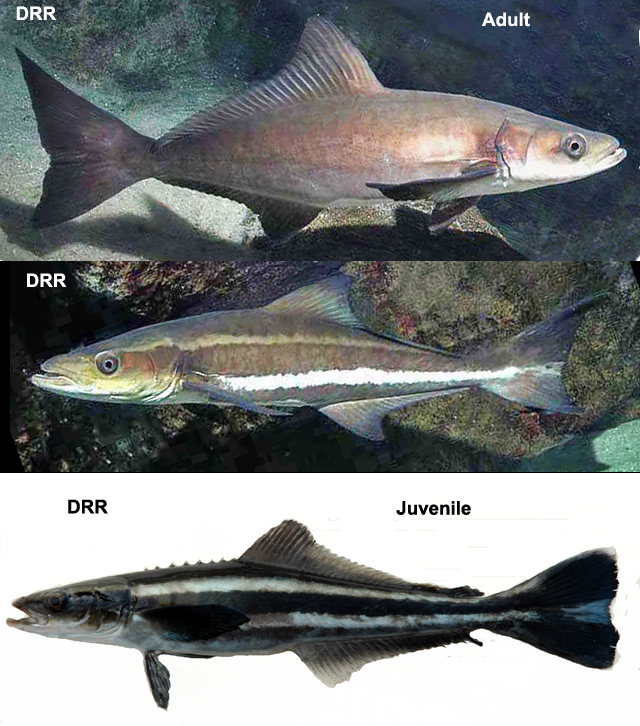
Going Rogue
They’re hungry, they’re growing and they may be headed this way.
Several months ago, tens of thousands of cobia, a species of fish farmed as a high-quality food source, escaped from an aquaculture facility off the coast of Ecuador. Almost mature, the fish are making their way north at the rate of about 200 miles per month and already have been sighted near the Panamanian coast. That’s a distance of 600 miles from their watery caged home.
According to Milton Love, a research biologist with UC Santa Barbara’s Marine Science Institute, chances are 50-50 that these escapees will reproduce and make their way up to California. “The idea is intellectually interesting and vaguely horrifying at the same time,” he said. “The disturbance of biodiversity could be a major issue.
“This is the first time that Southern California waters potentially could have a large and voracious non-native species invade,” continued Love, author of “Certainly More Than You Want to Know About the Fishes of the Pacific Coast” and other ichthyological tomes.
“What effect that will have on the native fishes, no one knows,” he added. “It might not have any observable effects or it might have considerable ones. A possible scenario is for these fish to become well-established and start chomping down on native species the way Pac-Man slurps down pac-dots. For instance, Southern California’s rock crab fishery could be affected if a lot of these animals show up and start eating crabs at an alarming rate.”
Cobia is an important recreational and commercial species of fish found in the warm-temperate to tropical waters of the western and eastern Atlantic Ocean, the Caribbean and the Indo-Pacific off India, Australia and Japan — but not in the eastern Pacific. Sometimes called black salmon, cobia mature rapidly, morphing from eggs to 11-pound fish in about a year (some salmon take three). A fully grown cobia can be six feet long and weigh more than 100 pounds. They prefer water temperatures between 68 and 86 degrees Fahrenheit.
Cobia rarely travel in schools except during spring to early fall spawning seasons. Instead, they prefer to shelter in harbors and around wrecks and reefs. According to Love, if cobia reach Southern California, they will likely favor drifting kelp mats, oil platforms or piers.
“You might expect to see cobia as summer migrants like yellowtail,” Love said. “They seem to be able to compete well with other fish in the vicinity and are generalists as far as what they feed on. Here, they would be in competition with yellowtail, bonito or even with reef fishes like kelp bass.”
The only other instance of a non-native species establishing itself in the eastern Pacific is Atlantic salmon. This species — not closely related to Pacific salmon — was brought as fingerlings to aquaculture farms on the Pacific Coast, where they escaped and are now established off Alaska and British Columbia.
“Atlantic salmon have managed to survive and reproduce and compete with local species,” Love said. “However, these non-natives may have brought diseases with them that are not endemic to the Pacific Coast.”
Love noted that the escape of fish farmed in ocean pens will likely happen more frequently as the importance of this type of aquaculture increases and laws remain as lax as they are in some places.
Love said he hopes that both recreational and commercial anglers from Baja California to Point Conception will let him know if they happen to catch cobia. The dimensions of the fish, its weight and the longitude and latitude of where the fish was caught could help scientists chart the species’ progress. Such information and a photo can be sent to milton.love@lifesci.ucsb.edu.



